The enlargement of the European Union (EU) refers to the process by which new countries join the Union, thereby expanding the EU’s membership and increasing its geographical and political reach. Since its inception, the EU has undergone several enlargements, with the most significant expansions taking place in 2004, 2007, and 2013, as countries from Central and Eastern Europe, the Balkans, and other regions sought membership. The process of EU enlargement is an essential aspect of the EU’s foreign policy and represents a core goal of fostering peace, stability, and prosperity across Europe. However, the enlargement process also presents several challenges, including issues related to political, economic, and social integration, as well as concerns over the impact of expansion on existing member states.
1. The Process of EU Enlargement
The process of enlargement involves several stages, beginning with the application for membership and continuing through negotiations, reforms, and final accession. The key steps are as follows:
- Application and Candidacy Status:
Any European country wishing to join the EU must submit a formal application for membership to the European Council. The country must meet the Copenhagen Criteria, which set out the conditions for membership: stable democratic institutions, a functioning market economy, and the ability to adopt and implement EU laws and policies (the acquis communautaire). Once the application is submitted, the European Council must decide whether to grant the country candidate status. - Negotiation and Screening:
After candidacy is granted, the candidate country enters the negotiation phase. This process includes a screening process, in which the applicant country’s existing laws and policies are evaluated for compliance with EU standards. Negotiations cover various sectors, including political, economic, social, and environmental policies. The candidate must align its laws with the acquis communautaire, which consists of the EU’s entire body of laws, policies, and regulations. - Reforms and Adaptation:
As part of the negotiation process, the candidate country must undertake significant reforms to align its institutions and policies with EU standards. These reforms are usually focused on areas like human rights, democracy, the rule of law, market liberalization, environmental standards, and public administration. The country is required to strengthen its institutional capacity to implement EU laws and regulations effectively. - Accession and Membership:
Once all the necessary reforms have been made, the European Council and the European Parliament must ratify the accession treaty, formally allowing the candidate country to join the EU. This treaty outlines the terms of membership, including transitional arrangements, budget contributions, and other specific commitments. Following ratification, the country becomes a full EU member.
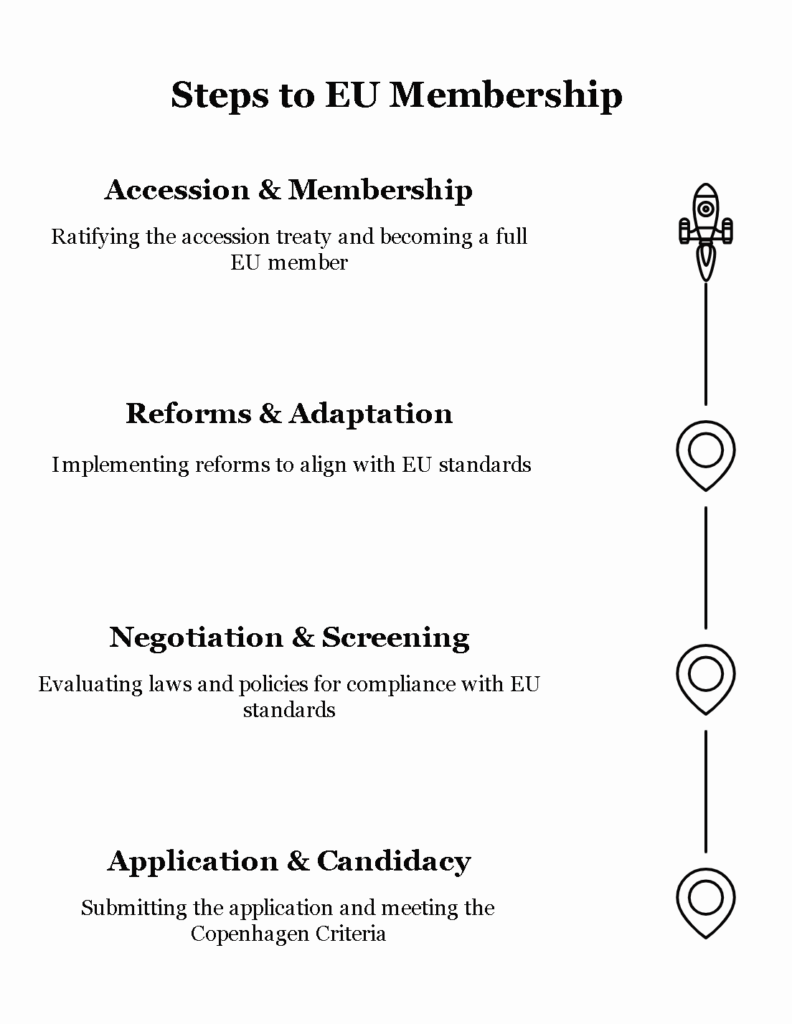
2. Challenges of EU Enlargement
While the process of EU enlargement has been successful in promoting peace, stability, and prosperity in Europe, it is also fraught with challenges. These challenges can be grouped into several categories:
- Political and Institutional Challenges:
One of the most significant challenges of enlargement is ensuring that the new member states have the political stability and institutional capacity to meet EU standards. Some countries, especially those in the Balkans and Eastern Europe, have faced difficulties in adopting democratic institutions, maintaining rule of law, and combating corruption. These challenges are compounded by concerns over human rights, minority rights, and democratic freedoms in some candidate countries.
The EU must carefully monitor the progress of candidate countries to ensure that they are making meaningful reforms. However, political instability or a lack of political will can delay or even derail the process. For example, Turkey has faced difficulties in meeting EU criteria, particularly in the areas of human rights, freedom of expression, and democratic governance, which has caused significant delays in its accession process.
- Economic Integration:
Economic integration is another major challenge. New member states must demonstrate the ability to establish a functioning market economy that aligns with EU standards. This requires structural reforms, such as privatizing state-owned enterprises, reducing state intervention in the economy, improving financial regulations, and enhancing economic governance.
The economic disparities between older and newer member states can also pose challenges. Some new members, especially in Central and Eastern Europe, face significant economic gaps in terms of income levels, infrastructure, and industrial development. These disparities can lead to social tensions and perceptions of inequality, both within the new member states and in the broader EU.
- Social and Cultural Integration:
Social integration, particularly in terms of migration and cultural differences, is another challenge. When new countries join the EU, there is often a rise in migration flows as citizens of these countries seek work or educational opportunities in wealthier EU states. The freedom of movement principle, which is a cornerstone of the EU’s single market, can lead to tensions in receiving countries, particularly those with high unemployment rates or struggling economies.
Cultural differences can also pose challenges in integrating new members into the EU’s political and social framework. While the EU promotes diversity and inclusivity, the integration of new member states from different historical and cultural backgrounds can take time. This is especially true for countries in the Balkans, where tensions related to ethnicity, language, and religion can complicate the integration process.
- Impact on Existing EU Member States:
Enlargement can also create challenges for the existing member states. The addition of new countries can shift the balance of power within the EU institutions. For instance, the European Parliament and the Council of the European Union may experience changes in the distribution of votes and influence, leading to concerns from long-standing member states.
Additionally, the enlargement process often involves significant financial support for the new members, including funds for infrastructure development and economic restructuring. This can place a financial burden on the EU’s budget, especially in times of economic crisis or financial instability.
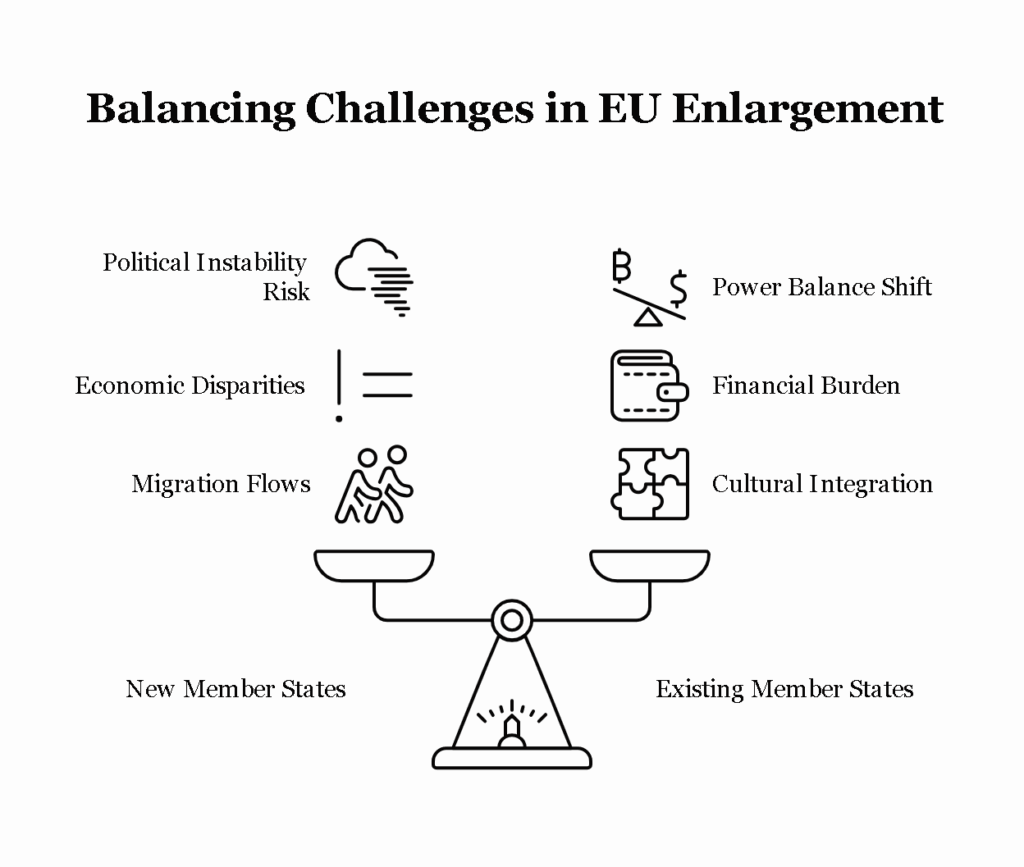
3. Enlargement in the Context of EU’s Global Role
EU enlargement plays a critical role in strengthening the EU’s global presence and geopolitical influence. By expanding its membership, the EU seeks to promote stability and prosperity in its neighborhood and beyond, creating a wider zone of peace. The enlargement process also provides the EU with the opportunity to promote its values, including democracy, human rights, and the rule of law.
However, the future of EU enlargement is increasingly uncertain, with Turkey’s stalled negotiations, the rise of Euroscepticism, and geopolitical challenges such as the situation in the Balkans and Ukraine complicating the process. There is also debate within the EU about whether the Union should focus on deepening integration among existing members rather than expanding further. Nevertheless, enlargement remains an essential component of the EU’s vision for a peaceful, stable, and unified Europe.
Conclusion
The process of EU enlargement has been integral to the Union’s evolution, bringing stability and prosperity to many European countries. However, it is not without its challenges. Political, economic, and social integration pose significant obstacles for both candidate countries and the existing EU members. Despite these challenges, enlargement remains a central goal of the EU, reflecting its commitment to fostering peace and democracy across Europe. The success of the enlargement process will depend on the ability of the EU to balance the benefits of expansion with the complexities of integration, ensuring that the new members are fully integrated into the EU’s political, economic, and social framework.



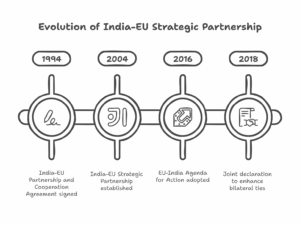


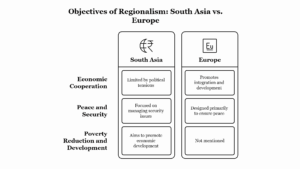
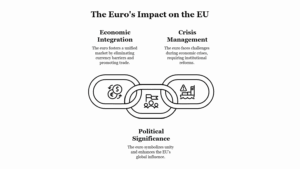
Leave a Reply